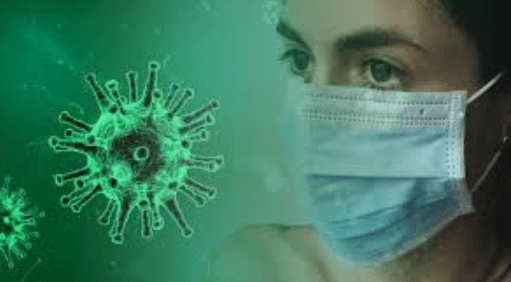CORONA VIRUS: The pandemic in 2021

Corona virus is an infectious disease which is caused by a newly discovered virus. This virus is known as corona virus and its codename is COVID-19. The COVID-19 was first reported in Wuhan, the city of China back in December 19. This virus has since wreaked havoc worldwide. It was declared a global pandemic by the world health organization (WHO) on March 11, 2020.
Meaning of corona
Corona virus actually got their name from the way that they look under a microscope. The structure of corona virus is quite similar to other viruses as it has a core of genetic material surrounded by an envelope with protein spikes. This gives it the shape of a crown. The meaning of corona in the Latin is crown.
The corona virus are basically zoonotic in nature meaning that the virus are transmitted between animals and humans. Corona virus is basically belongs to a large family of viruses who spread respiratory diseases from common cold to a severe illness. In the history, there were two viruses which spread havoc across the regions and these were Middle East respiratory syndrome (MERS) and severe acute respiratory syndrome (SARS). These viruses were also belonged to the family of viruses. The basic cause of corona virus is severe acute respiratory syndrome corona virus 2(SARS CoV-2) virus strain. This virus strain is seen in the COVID patients.
Clinical Presentation
The symptoms of corona virus may varies from patients to patients. However some patients have no symptoms at all. Symptoms may include:
- Respiratory symptoms
- Fever
- Cough
- Shortness of breath
- Breathing difficulties
- Fatigue
- Sore throat
Emergency warning signs where speedy medical attention should be required include:
- Difficulty in breathing or the shortness of breathing
- Persistent pain in chest or pressure in chest area
- Bluish lips or face
High-Risk Populations
The corona virus affect the people of all ages. However evidences suggest that two sorts of people are at the high risk of getting infection.
- Older people
- People with severe chronic illness such as
- Diabetes
- Cardiovascular problems
- Chronic respiratory disease
- Cancer
- Hypertension
- Chronic liver disease
WHO advice for high risk populations
- When having visitors at your home, extend distance.
- Request the visitors and those who live with you, wash their hands.
- Clean and disinfect surfaces in your home on a regular basis.
- Limit shared spaces if someone in your home is not well.
- If you have signs and symptoms of virus then contact your doctor by telephone, before visiting your health care facility.
- Have and action plan in preparation for an outbreak of COVID-19 in your community.
- When you are in public, practice the same preventive guidelines as you would at home.
- Keep updated on COVID-19 through obtaining information from reliable sources.
Transmission of COVID-19:
Evidences are showing that the virus is transmitting from person to person. The disease also spread by small respiratory droplets and direct and indirect contact with infected secretions. The incubation period of COVID-19 currently understood to be between 2 to 14 days. This means that if a person remains well after 14 days after being in contact with a person with confirmed COVID-19, they are not infected.
Preventive Transmission
The WHO suggests the following basic preventive measures to protect against the new corona virus:
- Stay up to date with the latest information on the COVID-19 outbreak through WHO updates. You can also use your local and national public health authority.
- Practice hand hygiene frequently with an alcoholic hand wash.
- Avoid touching your eyes, nose and mouth.
- Perform respiratory hygiene by coughing or sneezing into a bent elbow or tissue and then dispose that tissue immediately.
- Wear a medical mask
- Maintain social distancing from individuals with respiratory symptoms.
- If you have a fever, cough and difficulty breathing seek medical care.
COVID-19 and US
The corona virus is very dangerous infectious disease which has created both a public health crisis and an economic crisis in the US. It is pandemic which has disrupted lives of the people and pushed the hospital system to out of capacity and also created a great loop holes in the global economy. As of September 15, 2020 there have been more than 6.5 million confirmed COVID-19 cases and more than 195,000 deaths in the US. Corona virus badly effect the economy of US.
The National Bureau of Economic Research (NBER) determined that a peak in monthly economic movement happened in the US economy in February 2020, and it end the major US economic developments. The rising COVID-19 patients will overwhelm the medical capacities and the economy of US into deep freeze. Currently, the western hemisphere of the US affected more because of virus. COVID-19 pandemic has been adversely affect the travel sector, financial markets, employment, shipping and many other industries. It created stress on supply chains and decrease the income of the government. It collapse the Tourism and hospitality industries.
Conclusion
Hence, corona virus spread havoc across the globe. It was very unpredictable situation for the whole world. The pandemic makes us to remain humble in the face of any disasters. It is a time to give up all sort of typical thoughts and start acting from a moral perspective. After all, our best bet is a happy future for all who live on Earth and our common home.




